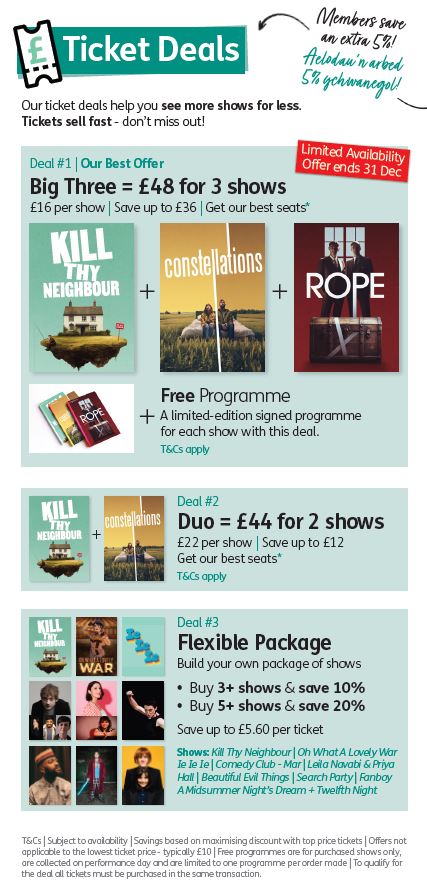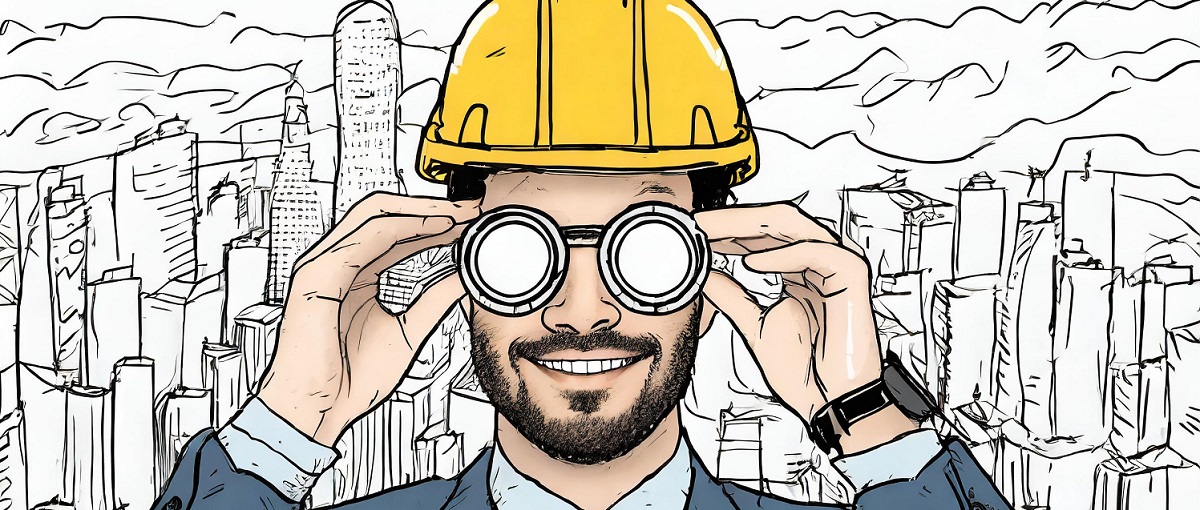I like subscriptions – they’re great – one sale resulting in tickets sold for multiple performances. We’ve done them lots over the years – sometimes successfully, sometimes with minimal impact – but, if I’m honest, I’ve never given them the attention they deserve.
So I started pondering how I could make them better.
Not just better, but perfect.
It also coincided with me reading a few books about Behavioural Economics, or, as Dan Ariely (writer of “Predictably Irrational”) put it “The hidden forces that shape our decisions”. It got me thinking about whether there’s a way to build as many of the tweaks, tricks and insights that Behavioural Economics has into a subscription for theatre shows.
What I landed on was what you can see in the picture below.

Looks fairly standard right?
Nothing ground-breaking at all in there.
But it is, at the time of writing, really driving our sales beyond my expectations – our shows are ahead of where they should be and are, finger crossed, on course to hit and then exceed their targets. It’s worth saying that with this subscription we have a few aims around accessibility and maintenance of profile as well as simple cold hard cash.
Here’s the breakdown of what we did.
- Three Different Offers
All three of these offers are designed to do one thing – sell deal #1. This sounds counter-intuitive – why waste paper on two other deals if deal #1 is your objective. This comes down to comparison – how do audiences know what is a good deal unless they have a comparison. Deal #3 is different to Deals #1 & #2 so not directly comparable – it’s there to be eliminated straight away in most cases – relative to the other two the value isn’t clear and the savings are much less. Deal #3 gives people the impression of choice and options. That leaves deal #1 and #2 as the only two that can, legitimately, be compared. Deal #2 is the deal that makes deal #1 look extraordinary, magical even. The comparison of deals 2 & 3 give the audience a benchmark against which they can judge deal one. - Linked Artwork
The artwork is linked. It’s deliberate – we’re selling a season. It does a very useful job in providing cohesion – what you’re buying in deals #1 and #2 is a curated cohesive programme of work. It emphasises how deal #3 isn’t really something that can be compared to. It pushes people to look at deals #1 & 2 almost subconsciously. Incidentally the page in the brochure this appears on isn’t accidental either – it’s straight after 3 double page spreads about the three main shows. - Free Programmes
People love getting something for free. We design programmes in house – it’s a relatively low cost – but the idea of free means that rather than people having a perception what they have to pay to gain something, instead it creates a sense of something you might lose if you don’t do something. It’s a powerful motivator. Originally we were also going to plant a tree for each of these subscriptions purchased alongside this free programme because, I thought, the opportunity for getting the best deal, not losing out on something free AND saving the planet philanthropically would be even harder to resist. We’ll do this for our next one. - Value Added
We’re adding value where we can – the programme isn’t just free – it’s also limited edition and also signed. You don’t just get any seats – you get our best seats (subjective). - Raising the pressure
We don’t want people to delay – we set a short deadline for people to actually engage with this. Notice how it’s in red (breaking the beautiful colour scheme) – it’s to raise the awareness (think what else tends to be red in life). There’s also limited availability – which is correct – these shows are in much smaller spaces than usual. There is a human fear about missing out on something – literally “don’t miss out!” and “Tickets sell fast”. Oh and remember those limited edition signed programmes…? That’s what I’m landing. - Defining what is best
We have defined what is best. Little phrases “Our Best Offer” invites the audience to compare the offer so that they see that… In fact… Yes, it is the best offer. We have invited challenge and then been shown to be correct… Best seats is another element – we define what is best. - Removing savings guesswork
Deal #3 is a % based discount – that’s deliberate to make it the least attractive deal. After all who wants to have to work out exactly which deal is best – how many 10% savings add up to the savings above? Yawn… We’ll take the easier option. The per ticket saving amount is different to the other two offers (which are total savings). It looks low. It is low. But remember that Deal #3 is a decoy, I don’t want people to buy it, just look at it and think, “well, it’s between deal #1 & deal #2”.
Deal #2 is money based not % based. It’s a fine deal, but the figures are very specifically designed in parallel with deal #1. This deal only exists to service deal #1 – to heighten the value, the savings and the brilliance of deal #1. It is deliberate that for an extra £4 you can have an extra show and a programme to each show. Then you start to think about that £4 difference – maybe you think it’s not much, maybe you think that the value of the programmes would be more (they could well be) and so maybe the programmes tip you to buy deal 1 because, well, actually, it’s not £4 more, in reality it could be savings you’re making on programmes…
Found this interesting? Message me on Linkedin and say hi!
